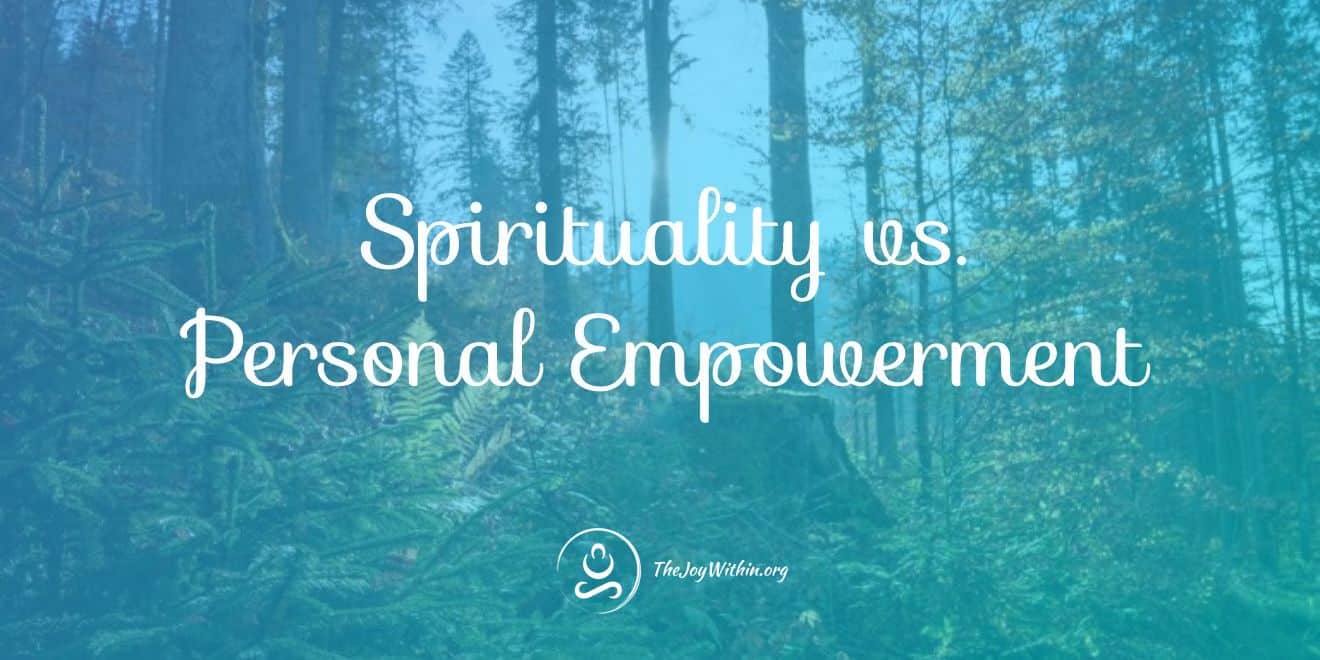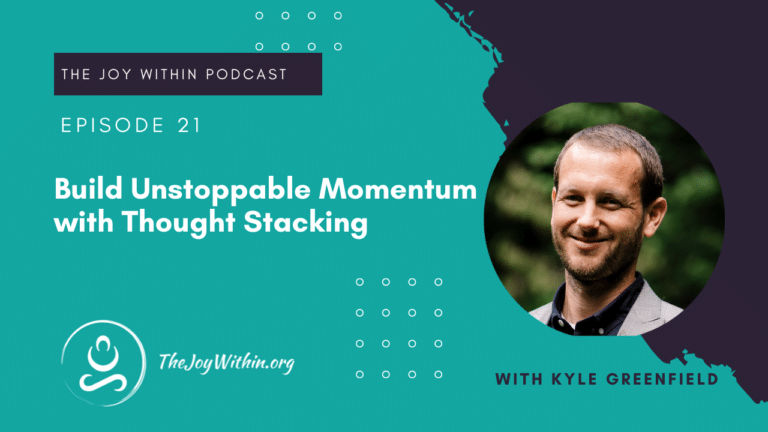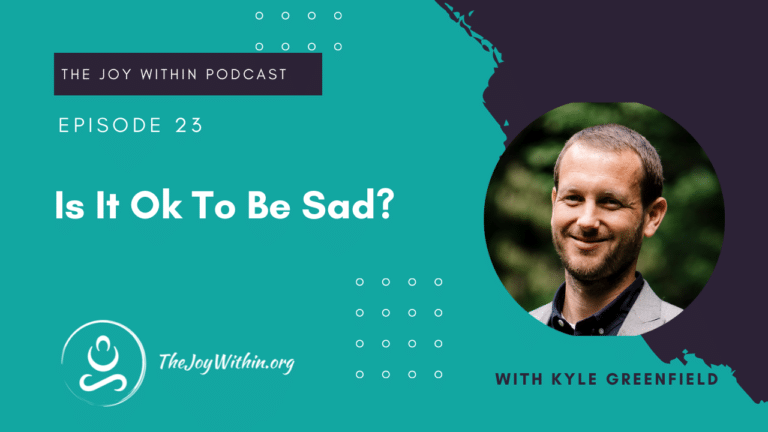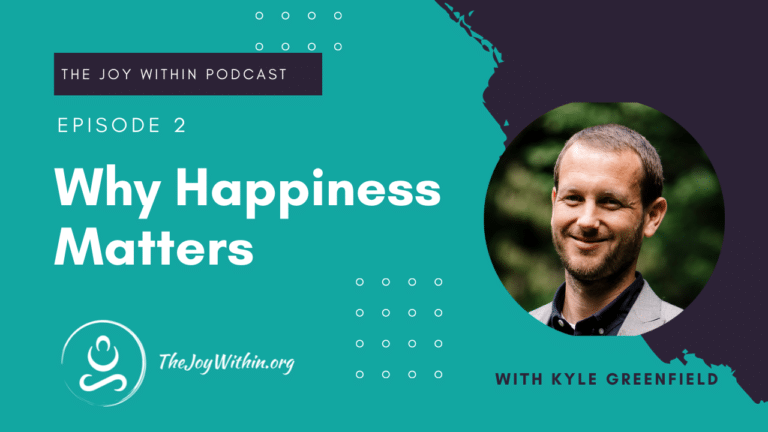Podcast Episode 2: The Two Paths of Personal Grwoth: Spirituality vs. Personal Empowerment
In the last episode, I talked about how one of the biggest obstacles to spirituality originates from the stereotypes we hold about it, what we think it should look like and, in particular, the belief that it isn’t practical for the modern world. We think there’s a disconnect between the lofty aim of awakening into a higher consciousness, and the day to day reality of living our lives, dealing with stress, worrying about money, wanting the best for our families, and the thousand and one other things we deal with every day.
We talked about how finding enlightenment doesn’t mean you have to drop everything and go meditated on a mountaintop, but how, exactly, are you supposed to find inner peace while living in the — often chaotic — modern world?
In this episode, I’d like to suggest a framework that will help you to do just that. I break this framework down into two paths: the path of peace, and the path of personal empowerment. Each has their own set of tools and strategies that help you to raise your energy and remain centered in a fast-paced world.
The path of peace aligns more closely with what we tend to think of when we imagine someone who lives a spiritual life. It is a path that asks you to turn your attention inward, reduce mental chatter, and create space from which feelings of peace, love, and compassion can emanate.
It is a process of learning to detach from your circumstances and, through this detachment, to allow your natural joy to spread into every area of your life, regardless of the conditions you face, or any apparent negativity you may encounter. The aim is to strengthen your sense of peace so completely that you exude it in every moment. In a very real sense, you become untouchable.
If the path of peace is a path of introspection, the path of empowerment is one of extrospection — the act of using your place in the world as a vehicle for self-expression and self-realization. It is a path of following your passion — following your joy — into higher and higher states of exaltation. Through it, you use your physical actions and goals within the world as a method of self-discovery.
Both of these paths are equally valid. And, for most people, it is some combination of them that yields the best results. I like to view them as two ends of a spectrum, against which all of your thoughts and actions fall. With the right lens, everything you experience in life helps you along one or both paths.
We will look at specific exercises and strategies for each as we continue, and The Joy Within offers a number of different courses and workshops that explore these paths from different angles. But, for now, I want to talk about some of the key characteristics of each path, and how you can use them to chart a course that works for you.
If you choose the path of peace, much of your focus will be on cultivating a sense of stillness that originates from within. As you tune-in to this natural, effortless sense of joy, you will seek to remain in constant-contact with it. You will practice strengthening and returning to your inner stillness over and over again, and your primary challenge is to learn how to apply this inner sense of joy to the outside world.
You may feel called — in your own time — to begin to simplify your life, not because you deny yourself the things others want, but because you stop needing those external symbols to be happy. You become more comfortable with yourself, and in the company of those you love.
As you do, you begin to find more joy in the simple things. Your five senses become livelier — colors appear more vibrant, food tastes better, sound feels richer — and you begin to feel a profound curiosity, wonder, and fulfillment in every moment. Your life becomes peace. Or, perhaps more accurately: you become peace, until peace becomes your only reality.
If you choose the path of empowerment you focus on action as a means of inspiration and passion, one big question many face is what they should do. After all, how do you distinguish between someone who is pursuing — for example — traditional symbols of success in terms of money or power, versus someone who is pursuing self-realization through empowerment? The answer, I believe, lies in the underlying motivations and awareness that one has. The barometer is simple: are you doing an action or pursuing a goal because you think you should do it in order to achieve a specific result? Or, are you taking that action because you feel inspired to it and passionate about it?
When you act from an awakened consciousness, the primary purpose of your action is always the action itself. You do it because it resonates, because you feel compelled to it, and you view any result that may emerge as a secondary benefit. This does not mean you don’t set goals, it doesn’t mean you don’t want to achieve some outcome, it means that your primary motivation, your primary joy, comes from being in the moment with the action. It is a sort of dichotomy, a balance. As you act, you are both fully immersed in what you are doing, you are in the zone, so to speak, and yet you are stepped back from it. You are detached, and aware.
It is one thing to talk about this state theoretically, and another to do it, every day. If you choose the path of empowerment, you may find you bounce constantly in and out of this flow. You may simultaneously be engrossed in your passion, but acting from a belief that is not aligned with it. This is very. very common, and, while this motion might feel like you are constantly falling off your path, in fact it’s an indication that you are pushing forward, at exactly the speed that is right for you.
This is because when we set goals we’re passionate about, they always bring up lessons we need to learn. We might, for example, think a goal is only possible if we do something difficult, or something we don’t like. Our beliefs about how we must act to reach the goal push us back into a state of disempowerment, a lower consciousness in which we are not aware and aligned with the best versions of ourselves.
So, as you are unlocking the path of empowerment, the process consistently pushes you up against different beliefs — beliefs about what is possible, or necessary, or right for you — and encourages you to reconsider each and every one of them. In this way you learn to choose deliberately the ideas that you want to govern your life, and dismantle any other ideas that might appear to block you from that.
As you learn to do this consciously, every day, you begin to act with more and more integrity, more enthusiasm, more wonder, more passion, and more joy. When I say you act with more integrity, I don’t just mean acting honestly or being an upstanding citizen. I mean integrity in the sense of being integral, interlocked, and interconnected with everything around you. You begin to savor and love everything in the world, because you recognize, increasingly, that you are One with it.
Developing this level of awareness, bliss, and love through inspired action is not so different from developing it through meditation, prayer, or other forms of internal focus. The basic principles remain the same — only the form, the method, is different.
How you define your individual path, then, is up to you. You may choose to immerse yourself fully into one side of the spectrum of the other; you might find you ping-pong between them, or you may choose aspects from each to combine and balance the two paths in your own way.
Remember: there is no “correct” way to become more conscious, and there is no judgment in any path you may choose. I offer these descriptions not as defining elements to constrain you, but as ideas that will help you to sift, adapt, and apply this framework for yourself.
And, I think you’ll find that, whichever path or variation you may choose, gradually you will realize that the pursuit of one path is the pursuit of the other. It is all One, all a part of this process of awakening consciousness, manifesting deliberately, becoming spiritual, or whatever words you choose to describe it.
In every sense: All Is Well With You.





thank you so much 😉